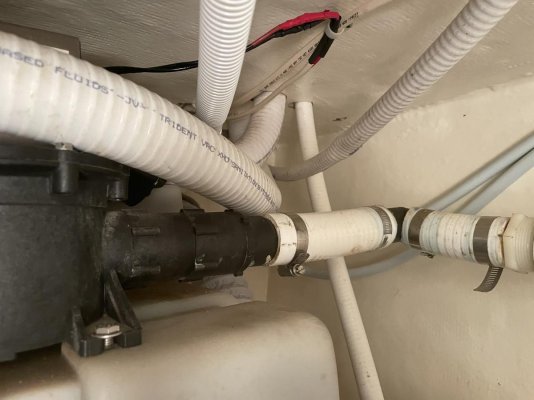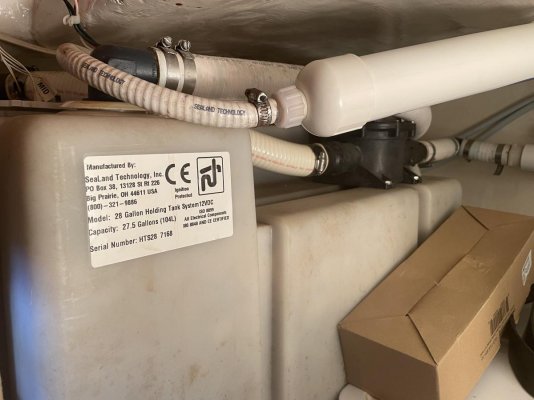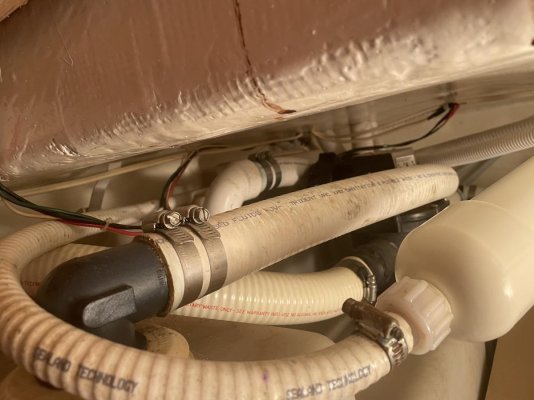Before replacing my entire black water system I read all the advice here and heeded Peggy's advice. At first I thought there would be no way to route a 1.5" vent successfully, what with all the things in the way and the long run from the tank location to available access.
I allowed a couple of friends aboard to look at the location and to suggest alternative routing for the vent. Eventually I came back to my first inclination, to route the vent through the fwd hanging locker so as to achieve a position on the side of the hull that was high enough, and to which the vent would fall the last few inches, so if there ever was a tall enough wave at that location, it would most likely not end up running into the tank.
I used hard pipe, 1.5" inside diameter, with a mushroom through hull fitting that is over 24" above the resting WL. Installation would have been so much easier with the use of an extra joint between my wrist and elbow, and an extension of my wrist. Awkward in the extreme, but using hard pipe, I was able, with a second person, to hold the horizontal piece that went between the floor and the stringer in place while the helper jammed the vertical into the angle fitting far enough for a good seal. Oh the advantages the builder has, to put this sort of thing together before the interior goes in!
Hard pipe will never allow anything to sit in the line, so will not make any contribution to smell. The old vent was rubber hose, attached at the tank through a 1/2" bronze fitting and at the hull through a vent exactly the same as the one on each of the water and fuel tanks, bug screen and all, so effectively 1/8" diameter. No wonder it allowed a bad smell!
If you take nothing else from this, at least use hard pipe to eliminate sags, and go to as large a diameter as you can fit.




